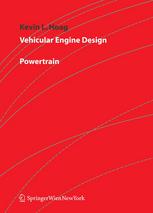

Most ebook files are in PDF format, so you can easily read them using various software such as Foxit Reader or directly on the Google Chrome browser.
Some ebook files are released by publishers in other formats such as .awz, .mobi, .epub, .fb2, etc. You may need to install specific software to read these formats on mobile/PC, such as Calibre.
Please read the tutorial at this link: https://ebookbell.com/faq
We offer FREE conversion to the popular formats you request; however, this may take some time. Therefore, right after payment, please email us, and we will try to provide the service as quickly as possible.
For some exceptional file formats or broken links (if any), please refrain from opening any disputes. Instead, email us first, and we will try to assist within a maximum of 6 hours.
EbookBell Team

4.0
16 reviewsThe mechanical engineering curriculum in most universities includes at least one elective course on the subject of reciprocating piston engines. The majority of these courses today emphasize the application of thermodynamics to engine ef?ciency, performance, combustion, and emissions. There are several very good textbooks that support education in these aspects of engine development. However, in most companies engaged in engine development there are far more engineers working in the areas of design and mechanical development. University studies should include opportunities that prepare engineers desiring to work in these aspects of engine development as well. My colleagues and I have undertaken the development of a series of graduate courses in engine design and mechanical development. In doing so it becomes quickly apparent that no suitable te- book exists in support of such courses. This book was written in the hopes of beginning to address the need for an engineering-based introductory text in engine design and mechanical development. It is of necessity an overview. Its focus is limited to reciprocating-piston internal-combustion engines – both diesel and spa- ignition engines. Emphasis is speci?cally on automobile engines, although much of the discussion applies to larger and smaller engines as well. A further intent of this book is to provide a concise reference volume on engine design and mechanical development processes for engineers serving the engine industry. It is intended to provide basic information and most of the chapters include recent references to guide more in-depth study.